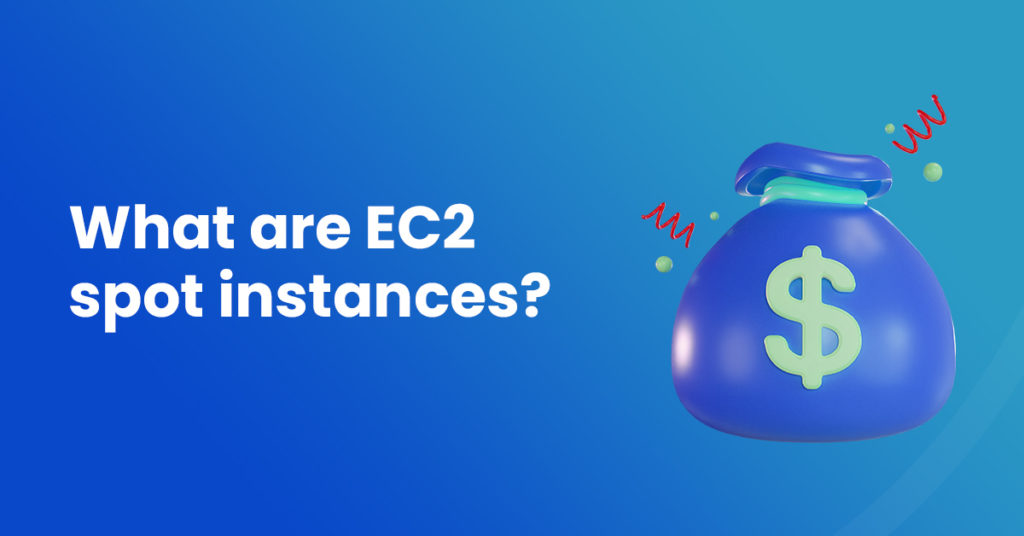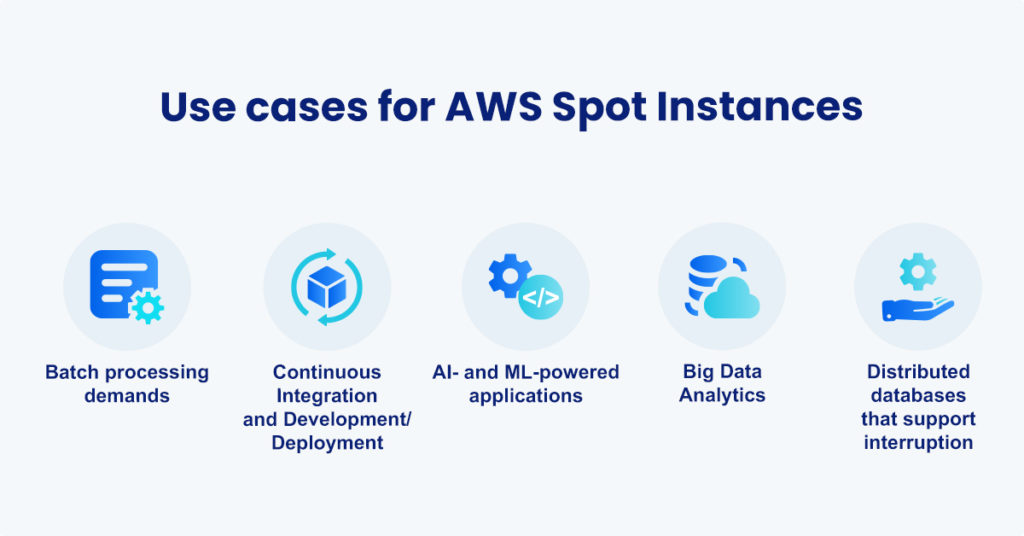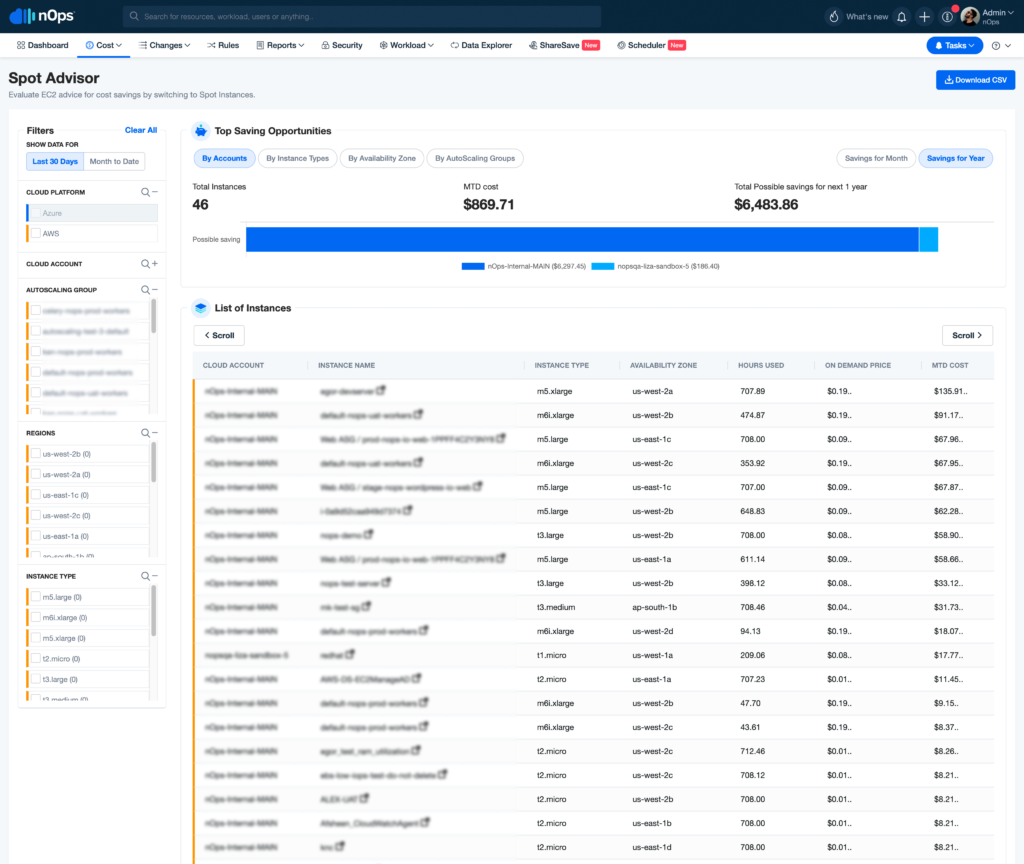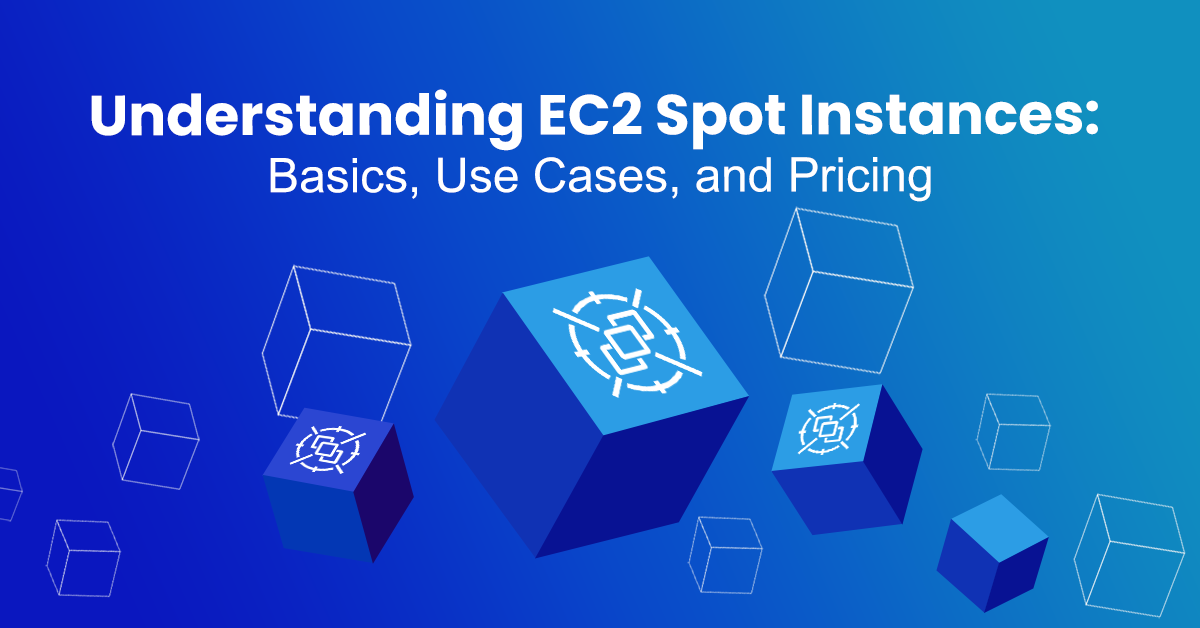Amazon Web Services offer numerous alternatives to its users, all of which come with their own pros and cons. Amongst the distinct pricing models available for the users, EC2 Spot Instances are known for offering cost savings of up to 90% of the initial investment. You can save the most but also risk ALOT if you are not doing it right. Let’s delve into what EC2 Spot Instances are, how they work, and what are the advantageous use cases. Read Through!
What are EC2 spot instances?

In layman’s terms, unused EC2 instances offered for less than the On-Demand price are known as AWS EC2 Spot Instances. Spot instances can cut your on-demand instance expenses by up to 90%, drastically lowering your EC2 costs. The hourly cost of a Spot instance is known as a Spot Price. Based on changing demand and supplies for Spot instances, AWS determines the Spot price for each instance type within every availability zone.
To be explained in a simpler way, whenever any instance from a particular availability zone is available, it is charged as AWS EC2 Spot Instances to help users save around 90% of costs. So that was the positive side of on demand vs spot instances. But coming to the downside of on demand vs spot instances, you will only be notified two minutes before the Instance gets terminated and your program/application is ceased. Thus, it is the alternative you would like to go for only when your platform’s availability is flexible and your applications can most probably be interrupted after a two-minute warning signal.
What are the benefits of AWS Spot Instances?
Here are the primary benefits of AWS Spot Instances that every business should be aware of:
- Tremendous Cost Savings: Spot Instances are a cost-effective way to access Amazon Web Services (AWS) compute power, allowing businesses to save up to 90% off on-demand prices.
- Support Demanding applications: They are great for running applications that require a large amount of computing power but can be flexible regarding when and how long they run.
- No upfront needed: By using Spot Instances, businesses can get the computing power they need without paying for it all upfront.
- Easier Scaling: Spot Instances can be used to quickly scale up to meet demand during peak periods, providing greater availability and flexibility than on-demand instances.
- Great with testing applications: Spot Instances can also be used to test new applications or experiment with existing ones since they can be stopped anytime.
- Handles Long Run: Finally, Spot Instances can reduce the cost of running applications that are expected to run for a long time.
When to Use AWS Spot Instances

AWS Spot Instances are a definitive cost saver but involve high risk if not employed appropriately. Thus, to help you out, here are some right use cases for AWS Spot Instances you should consider:
- Batch processing demands: Large volumes of data must be processed all at once during batch processing demands. Spot Instances are perfect for tasks like creating reports, processing documentation, and encoding video because they heavily rely on several processors and are primarily stateless.
- Continuous Integration and Development/Deployment (CI/CD): Scaling CI/CD operations by programs like Jenkins and GitLab is simple using Spot Instances. You can run everything at scale without investing in the enormous on-demand costs. On-Demand instances can be very expensive to use, and CI jobs have erratic timings.
- AI- and ML-powered applications: Spot Instances can be used for workloads and applications that need a speedy network, quick storage, a strong base of memory, and strong processing power. Thus, spot Instances are the best choice because GPU instances can be expensive when running AI and ML-powered apps. Even though unanticipated Spot Instance disruptions could jeopardize the progress of your deep learning and training, it is still viable to execute machine learning projects on Spot Instances.
- Big Data Analytics: Spot Instances can be used to lower the price of big data analytics as they are ideal for the arduous process of analyzing large data sets to produce relevant insights. On AWS EMR, Hadoop, or Spark, Spot Instances can be used to process various big data. Performance is enhanced by the fast scalability offered by spot instances.
- Distributed databases that support interruption: Distributed databases that have the ability to retain data even after instance reboots can be backed by Spot Instances without any problems. Examples include Mongo, Elasticsearch, and Cassandra, all of which are reasonably adept at picking up where they left off after an interruption.
For a detailed overview of the use cases of AWS Spot Instances, refer to When to Use Spot Instances.
Understanding the EC2 Spot Instance Pricing
You must have been wondering how the AWS Spot Prices change and what determines them. Here’s how:
Instead of establishing a fixed price, Amazon gradually modifies the Spot Prices based on the supply and demand of the related market factors. More particularly, it doesn’t take into account your real-time bids but rather the market’s general long-term patterns.
Following that, AWS usually continues by monitoring all the placed bids. The users whose highest price bids happen to be greater than the current Spot Price are subsequently given Spot Instances.
You can explore the current rates for various Spot Instance types and track the Spot Price history page before placing your actual bid.
How can nOps help with AWS Spot Prices?

With Amazon Web Services (AWS), your cloud computing needs are never underutilized, nor overpaid, if you get the cloud requirements right. The Cloud Cost Optimization game is about knowing what you want, why you want it, and how much you want. Thus, it is highly important to understand your cloud needs. And here’s where cloud management tool like nOps enters to help you scale effectively.
With nOps ShareSave solution, you can consolidate cloud accounts into a single pricing model and offer ongoing visibility to change requests. This helps you easily manage cloud costs and save more money.
Plus, with nOps Cloud Cost Optimization, you can save more by centralizing cloud accounts into a consolidated billing model, providing instant and continuous visibility to change requests and delta to your infrastructure that cause cost, and giving you the best root cause analysis capabilities available anywhere.



